
With supermarket shelves empty, a murky black market began to emerge. With lettuce, courgettes and spinach unavailable, desperate shoppers - tired of strict supermarket rations and empty shelves - resorted to forking out £50 for £5 boxes of their 5 a day, exchanging cash with suspect strangers online.
One seller was caught shifting fresh-picked icebergs at £4.16 a pop on Gumtree, while another took to brazenly advertising on Twitter after stockpiling a carload.
Fun fodder for the tabloids, of course. But the impact of torrential Spanish rains on our fruit & veg supplies this winter have also acted as a far more serious reminder of the risks inherent in our reliance on imported food.
As revealed in a report commissioned by Morrisons in February, the UK imports a whopping £39bn of food each year across 168 countries. And though largely self-sufficient in eggs, meat and dairy, of which we produce 80% of our consumption, UK growers are only responsible for a tiny 23% of fruit & veg eaten by Brits.
Unfortunately, it isn’t only the odd downpour in the Mediterranean that we should be worried about either. The rising threat of climate change, political instability and the election of a protectionist US president, threatening to dismantle existing trade agreements, all throw into doubt the status quo, point out the report’s authors.
“In a stable world, it makes complete sense to grow the few things we are good at growing, export what we can, and import what we cannot grow so well,” they say, but “the future sees the possibility for the systemic risks to increase.”
Traditional outdoor growing seasons for UK fruit and vegetables…and how some have been extended
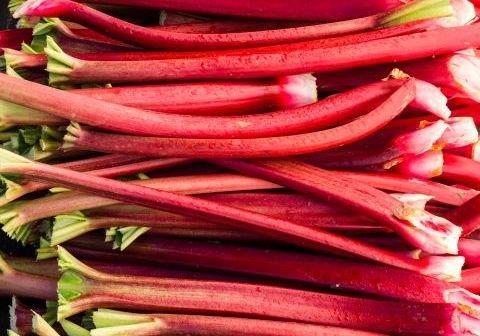
Rhubarb
It all started in 1817, when UK growers first stumbled on a novel way to produce rhubarb in the depths of winter. The Yorkshire Rhubarb Triangle Growers created special sheds or hothouses in which they ‘forced’ the crop to grow. Kept in complete darkness to avoid photosynthesis, which turns the vegetable green and tough, it was then harvested by candle light.
Asparagus
The fact we can now pick up a bunch of British asparagus as early as Valentine’s Day and into the autumn is largely possible thanks to the discovery of new cold-resistant varieties which can be grown in plastic polytunnels. Even for these heat still needs to penetrate the soil however and this is achieved thanks to a network of underground pipes.
Tomatoes
Sainsbury’s was able to offer its customers juicy British tomatoes in the depths of winter in 2014 thanks to its investment in new technology. Using a mix of warm LED lighting and sodium the growers were able to dramatically extend the traditional season. It was thought to be the first time a commercial nursery had used the tech to supply a major supermarket.
Carrots
Now harvested for an impressive 12 months of the year, 700,000 tonnes of British carrots are grown annually, the equivalent of 100 for every person in the UK. Early season carrots sown during winter are protected with plastic or fleece covers; hardier green top varieties are sewn in open ground during spring while more vulnerable varieties are kept warm until December.
Apples
Plenty of cash has been ploughed into perfecting the storage of British apples. By using refrigerated containers modified to achieve the ideal temperature, ripening can be delayed, freshness prolonged and the availability of British apples out of season improved. Now researchers are using ‘Concept Orchards’ to test a variety of techniques intended to lengthen the growing season too.
Berries
Two decades ago, British strawberries were a rare treat only available over six short weeks in June and July. Now the first British berries hit supermarkets in February thanks to widespread use of plastic polytunnels, the development of new higher-yielding varieties and, more recently, the use of LED lighting to stimulate growth up to December.
Risks compounded by Brexit. With the pound devalued, either European suppliers face 10% to 15% less cash for their fruit & veg in the UK, or British supermarkets will need to accept a price hike. Already, importers say the cost of our greens is on the up. The solution to all these risks is to boost British production, say the authors. More fruit & veg grown closer to home not only gives the UK greater resilience, but also helps drive trust among consumers and supports the local land economy.
“Embracing British produce is something we should all do because with less food miles, it’s inevitably tastier and often cheaper,” adds Andy Weir, head of marketing at fresh fruit & veg supplier Reynolds. “Most importantly, doing so supports British farmers.”
The appetite certainly appears to be there too, with Morrisons’ own survey revealing that more than two-thirds (67%) of UK shoppers state a preference for buying British. So how can we get more British fruit & veg in baskets?
In the past 20 years, many crops indigenous to the UK have seen volumes boosted. Strawberry volumes are up a huge 125%, according to the Smith Institute, while asparagus, apples and pears are all up 3%.
New technology has undoubtedly played a major role in many of these advances. At Christmas, Sainsbury’s shoppers feasted on British strawberries after suppliers Fresca Group added LED lights to its greenhouses, extending an indoor season that traditionally ended in November (itself a four-month extension on traditional seasonality) by a further four weeks.
Indeed tomatoes, cucumbers and peppers are cultivated year round (in state-of-the-art greenhouses and hydroponic growbags at Thanet Earth, the UK’s single-largest production site). And 33 metres below the bustling streets of Clapham, Steve Dring and his team at Growing Underground are tending to trays of microgreens bathed in LED, a venture for which they secured their first major listing in Ocado at the start of 2017.
“We were looking at global population growth, all the challenges agriculture faces around sustainability,” says Dring. “People have started expecting salad on their shelves in winter consistently so it comes from all around the world.
“All of that fed into the idea of ‘is there a business plan that allows you to buy a commercial sized farm in an urban location?’ And we foolishly decided to do it in a tunnel,” he laughs.
But though there is potential to upscale the model, with Dring offered 10 million square metres of tunnels in the West Country only recently, even he doesn’t see vertical farming as the solution to boosting British production in the short term. “I’m yet to see anyone make it stack up in terms of growing iceberg lettuce and selling it at the value retailers expect to pay for it,” he says, with Growing Underground’s own 80g salad mix retailing at £2.49 on Ocado (five times the cost of an equivalent bag of spinach).
“Sure, technology has a role,” adds Professor Tim Benton, dean of strategic research initiatives at the University of Leeds, and author of the Morrisons report. “But we haven’t invested enough in systemic solutions around maximising yields or building circular agricultural economies. [And] it is not simply about producing more, but also about wasting less.”
The more cost-effective basics of good R&D “to increase volumes, quality, or reduce risk and cost”, spending more cash on “effective promotion” of British produce and access to labour are all vital to boosting production and don’t require fancy new tech, according to Jack Ward, CEO of the British Growers Association.
The same goes for access to adequate plant protection. “Because of the withdrawal of so many products there’s always a question mark over whether we will have sufficient in the armoury to deal with pest, disease and weed infestations, particularly in the fresh produce sector,” he says.
Then there is our uncomfortable preoccupation with perfect produce, which famously saw one British farmer leave 40% of his parsnip crop to rot after it was rejected by retailers. And heavily reduced packs of ‘wonky’ fruit & veg won’t solve this waste of British food in the long term, advises Ward. “The expectation is you pay less, but it costs the same to produce, so from a grower’s point of view the idea is not to produce wonky veg,” he says. Instead “slight variations in spec are helpful and have more potential to minimise waste than an overt campaign on wonky veg”.
Yet though the likes of the berry industry are “leading the charge” on many of these initiatives to boost volumes, many other crops are lagging behind, with the Smith Institute uncovering declines of up to 50% in some British crops, including French beans, cauliflower, broccoli and Brussels sprouts.
“You can’t keep reducing the cost to the consumer at the same time as the cost of production is going up. It’s an unsquarable circle”
“Why don’t we produce more? Because the risks are very high,” sums up Ward. “Growers feel they’ve got as much risk as they want.”
Extending seasons or pushing up yield all takes extra money, after all. Serious money. Even boosting the volumes of berries housed in glasshouses would take “massive” investment, points out Laurence Olins, chair of British Summer Fruits, with many growers currently using second-hand facilities “converted and refitted”.
“You can’t keep reducing the cost to the consumer at the same time that the cost of production is going up,” adds Ward. “It’s an unsquarable circle. The continuous downward spiral of UK prices as retailers battle it out hasn’t provided an incentive for a lot of growers to say, ‘you know what, we’ll put in another 25% of this stuff’.”
Used to a diet of cheap fruit & veg, consumers are unlikely to accept any significant price hike either, but a mix of public and private cash will need to play a role, according to Benton. “If retailers seek to invest in shorter, more efficient, more transparent and resilient supply chains, if the public recognise the range of public goods that come with locally produced food and choose to buy local food, even if more expensive, and if public money seeks to support a diverse rural economy, all could contribute to positive outcomes,” he says.
A global supply chain: the numbers
£39bn of food imported
90% comes from just 24 countries, with 5.9% from the Netherlands
1/3 of our food is supplied from the EU
80% of our eggs, meat and dairy are produced in UK
62% of our cereals are produced in the UK
23% of our fruit & veg is produced in the UK
90% - The difference between the veg we import (£9.1bn) and export (£1bn) - the biggest gap of any food.
Spurred on by the findings of the report, Morrisons says it will dig a little deeper in its pockets to help British produce, kicking off a search for 200 new suppliers at a launch event in Yorkshire this week. Details are limited, though, with the mult saying the number of stores these new producers will supply will “vary on a case-by-case basis”, while it is unable to confirm whether the commitment will go beyond 2017. And for many British farmers it remains a sticking point that neither they nor any of the big four have signed up to the NFU’s Fruit & Veg Pledge, which includes a commitment to increase the amount of British produce available to their customers.
But for Benton extra cash for British producers isn’t the only answer. “The farming sector is well supported from the public purse, and, in addition, significant amounts of research funding is invested,” he says. “The question I would ask is not whether more money is needed, but whether existing money is being spent in the best way?”
He gives the example of the Common Agricultural Policy, which currently hands out “little support” to the horticultural sector despite payments of £6.4bn in direct payments and research grants to UK farmers overall. “A small re-profiling of public support could create a step change in the support for, and encouragement of, a diversity of farming types and food businesses.”
Of course, post-Brexit the status of CAP looks shaky at best. As does the supply of migrant workers upon which the horticultural industry relies. Only last month, asparagus grower Chris Chinn Farms warned MPs of the “very obvious and dramatic” impact of the EU referendum upon his business already, with eight interviews needed to secure one staff number, up from three a year ago. “These guys are not political experts, they don’t know what’s happening and they’re fearful,” he said.
“Embracing British produce is something we should all do because with less food miles, it’s inevitably tastier and often cheaper”
For Olins, this lingering uncertainty over growers’ seasonal workforce was a far bigger factor in their reluctance to expand volumes than the need for more money. “The big question is will we have pickers to pick crops?” he says. “That’s what’s holding back people’s expansion. There is no point in growing more if we can’t pick what we’re growing now.
“Land is not a problem, the growers are profitable so they can finance expansion, so capital is not a problem, but labour is a problem. Why expand if you have no guarantees?”
Which raises the question: if growers are understandably reluctant to invest in building up volumes, and emerging technologies are still reliant on huge levels of investment to scale up, might a simpler solution simply be for Brits to eat more seasonally?
“Our reliance on trade can be characterised by having what we want, when we want, and some commentators say that rediscovering seasonality is enriching and not constraining, and I can appreciate some elements of that,” says Benton. “Valuing locally produced food in season more than we have become accustomed to might be a positive outcome in terms of valuing everything our rural sector does for us.”
But for Ward the “genie is already out of the bottle”, with consumers thoroughly accustomed to strawberries at Christmas and asparagus in January.
For that reason alone we’ll always be reliant on imported fruit & veg to some extent. But in a new era of Brexit, global warming and Trump we’ll also need to work harder to coax growers, retailers and consumers into pushing for more British produce. If we fail, then a far bigger, far dodgier black market in fruit & veg could be on the horizon.








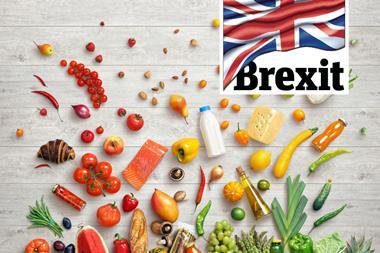
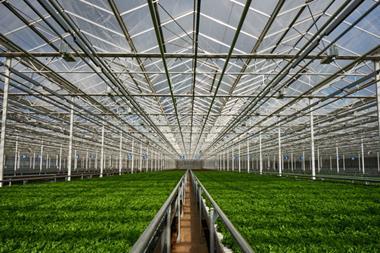

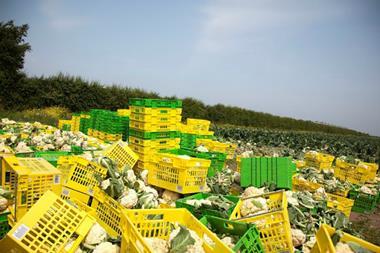



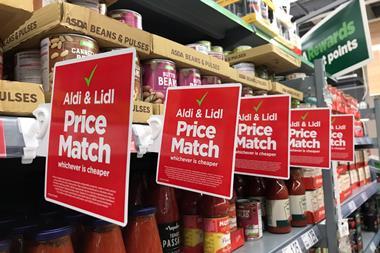
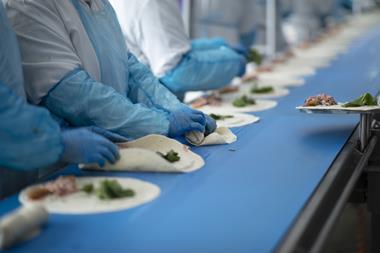
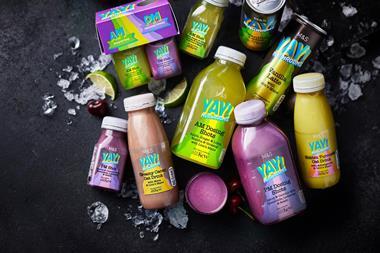

No comments yet